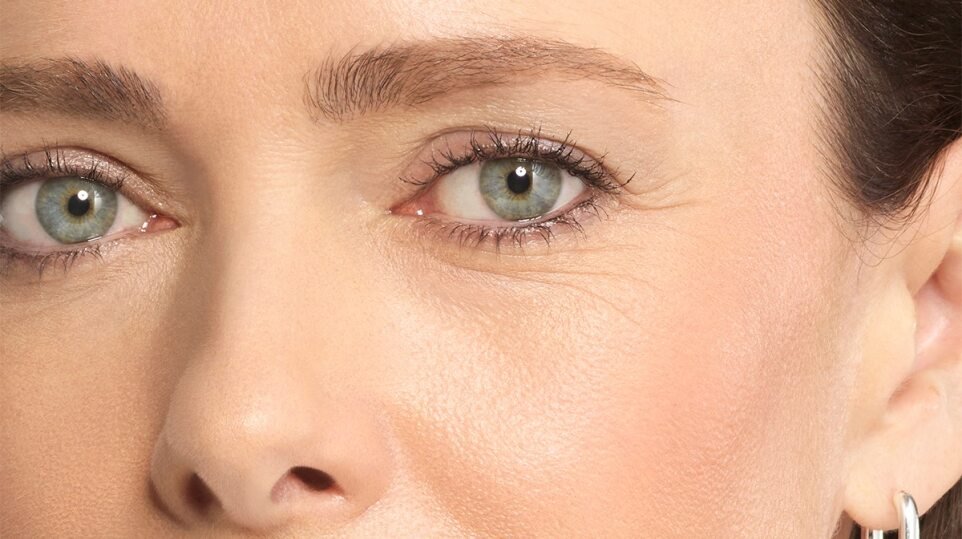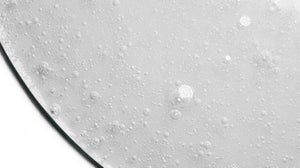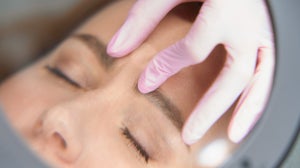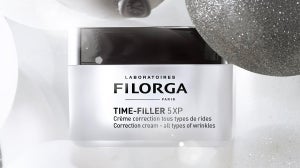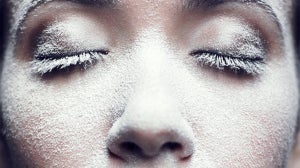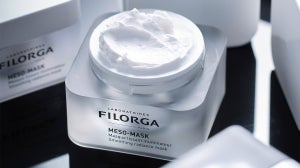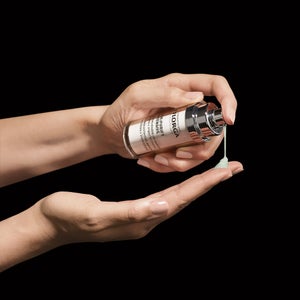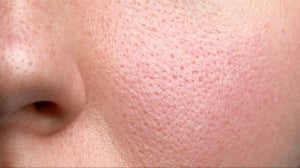
In medical books, skin is often referred to as integument, which in Latin means "envelope" or "covering". This shows the vital importance of this organ. The skin is our first line of defence against external aggressions such as pollution, UV rays and chemicals. Its protective characteristics can also be altered by stress, smoking or an unbalanced diet. With our current lifestyles, even with the best will in the world, it is impossible to be completely safe from these attacks. It is therefore no coincidence that our skin is the first organ to suffer from ageing.
Knowing the structure of your skin means knowing how to protect and care for it. It also means getting to the heart of our expertise at Filorga. Thanks to this article, your skin will no longer hold any secrets for you: you will understand how the skin lives and regenerates itself and how our products will help you keep your skin young, smooth and radiant.
Skin structure: 3 protective layers intimately linked
The skin is a vital organ that is not limited to a simple envelope. It protects us while allowing us to exchange with the environment. It is a part of our identity and a marker of the passing time. The 3 layers that form the structure of the skin have different but complementary functions.
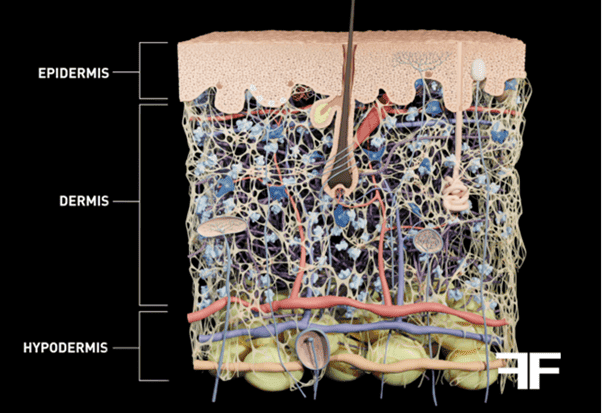
Epidermis
This is the external layer of the skin, the first shield against external aggressions. It is primarily made up of keratinocytes, tightly packed cells that produce keratin.
The epidermis renews itself completely every month. The keratinocytes migrate to the surface of the epidermis and mutate into corneocytes which then form an impermeable and resistant layer called the stratum corneum. Corneocytes are dead cells, but they remain bound together by a cement made of lipids. It is - among other things - to nourish this lipidic cement that our moisturizing creams integrate fatty compounds.
Melanocytes, the cells that synthesize melanin, are also present in the epidermis. They determine the color of the skin and react to UV light during tanning.
Also present in the epidermis are Langerhans cells and Merkel cells. The former are part of our immune system and can detect and neutralize certain foreign bodies. The latter contain nerve endings and are sensitive to pressure. They play an essential role for the sense of touch by allowing to detect shapes, textures, etc.
Dermis
Of the 3 layers that form the structure of the skin, the dermis is the most complex and the most active from a metabolic point of view.
It is crisscrossed by countless blood and lymphatic vessels that supply it with the necessary nutrients and transport immune cells in case of aggression.
The dermis is also made up of cells called fibroblasts which are bathed in a sort of gel and which secrete 4 essential macromolecules:
Collagen, which is resistant to traction.
Elastin, which brings suppleness to the skin.
Hyaluronic acid, which acts like a sponge and soaks up water, thus resisting the stresses exerted on the skin.
Proteoglycans, which participate in communication and adhesion between dermal cells.
These 4 macromolecules form a 3-dimensional network that is very resistant to shocks and protects the organs located further down.
But the properties of the dermis are not limited to the action of fibroblasts. It is in fact in the dermis that the skin annexes are born and develop:
The hair follicles form the hair.
The sebaceous glands produce sebum, a set of fatty substances which mixed with sweat reinforce the protection of the epidermis. This emulsion is called the hydrolipidic film.
The sweat glands produce sweat, which is essential for thermoregulation, the body's ability to cool itself.
Finally, it is also in the dermis that the nerve endings sensitive to heat, cold and pain are located.
Hypodermis
The deepest layer of the skin, the hypodermis is composed of fat cells, the adipocytes, which have a variable volume depending on the amount of fat stored there. The hypodermis is therefore an energy reserve tissue, but also a natural insulator against the cold.
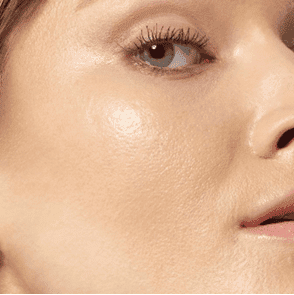
How your skin structure deteriorates with age and what Filorga can do for you
As we have just seen, the skin is not just a simple envelope. It is an organ with multiple functions essential to life, but it is not totally infallible. As with any living body, the properties of the skin decline with age and the effects of ageing differ depending on the aspect of the skin being considered. They do not have the same causes either.
Taking all these parameters into account, their origin, their nature, their mechanisms requires real expertise. Expertise such as that which Filorga has been developing for you for over 40 years.
Now that you have a better understanding of the skin's structure, let's discover the signs of skin ageing and the solutions that Filorga proposes to remedy them.
Wrinkles
They are the consequences of structural changes that appear in the 3 layers of the skin:
The lower layer of the epidermis becomes thinner and more vulnerable to aggression, while at the same time, dead cells (corneocytes) accumulate on the surface and form an increasingly thicker horny layer.
The fibroblasts of the dermis produce less collagen, elastin and hyaluronic acid. The dermis loses its properties of firmness and elasticity.
The volume of fat cells in the hypodermis decreases, which further contributes to skin sagging.
These changes in the structure of the skin are amplified by the movements of the facial muscles which create fractures in the dermis. These are the expression lines.
To prevent and reduce your facial wrinkles, Filorga is inspired by 5 aesthetic medicine techniques in its TIME-FILLER line.
Firmness
Skin that lacks firmness is characterized by sagging and loss of elasticity. Volume changes on the face are visible, such as deeper dark circles, sagging cheekbones and slack contours.
The loss of firmness is due to the disorganization of the dermis. As with wrinkles, fibroblasts are no longer able to produce enough structuring and nourishing elements. The loss of firmness also comes from the melting or displacement of the subcutaneous fat layer. Normally, this fat supports the skin, but if it disappears or shifts, the skin drops due to gravity.
In its LIFT, NCEF-REVERSE and GLOBAL-REPAIR ranges, Filorga offers creams and balms that can be applied according to your needs for loss of firmness.
Dehydration
Dehydrated skin is characterized by a low water content and a reduced capacity to retain it. Telltale signs include tightness, fine lines and lack of firmness. This sign of skin ageing is mainly due to an alteration in the barrier function of the epidermis as well as a decrease in the natural production of hyaluronic acid.
To regenerate dehydrated skin, Filorga has specially designed the HYDRA-HYAL range based on 5 types of hyaluronic acid that helps plump, smooth and moisturize skin.
Dry skin
External aggressions and skin ageing can lead to an alteration of the barrier function of your skin. You produce less sebum, the lipidic cement of your epidermis becomes less robust and your skin becomes less protective.
So, if you have very dry skin that tends to peel or has a rough texture, it needs to be nourished with specific care products based on lipid-replenishing ingredients. For a Global Repair Advanced SP that will fight dehydration and dryness in your epidermis, we recommend GLOBAL-REPAIR products.
Radiance
It depends on the ability of the skin to reflect light. With age, skin microcirculation slows down, leading to a decrease in the supply of nutrients and oxygen. Skin cell turnover slows down and the dead cells accumulate on the surface. The corneal layer becomes thicker and your complexion loses its radiance.
Toregain beautiful skin, Filorga recommends the use of SCRUBS. Based on peeling techniques, they will allow you to effectively eliminate the layers of dead cells. You can then reoxygenate your skin by applying OXYGEN-GLOW perfecting skincare and NCEF-REVERSE regenerating treatments.
Pigmentation
It is the melanocytes that ensure the pigmentation of the skin. They are located in the epidermis and produce melanin. When you tan, your skin becomes pigmented by producing more melanin. Then, as your skin cells renew themselves, melanin production returns to normal and the skin gradually regains its natural color.
Various factors such as prolonged sun exposure, hormonal changes, pollution and skin ageing can contribute to the appearance of hyperpigmentation spots. These factors can disrupt the normal function of melanocytes, leading to excessive melanin production and the formation of localized pigment deposits. Dark spots on the skin then appear, resulting in a loss of uniformity and luminosity of the complexion.
The SKIN-UNIFY complexion perfecting range by Filorga has been specially designed to reduce dark spots on the face and restore the skin's even, luminous appearance.
For over 40 years, thanks to its team of researchers and in close collaboration with renowned doctors and aesthetic surgeons, Filorga has been using the latest scientific advances to develop increasingly innovative and effective treatments for all signs of skin ageing.

